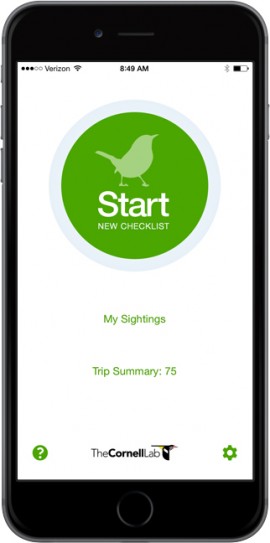I am what you would call a pre-amateur birder. I like birds, and from my time as a marine biologist I can easily identify several birds that are common on the water, as well as some that are more common on land. I don’t own a pair of binoculars or a telephoto lens, but I do own a Sibley bird guide which I sometimes bring on hikes. But after exploring eBird, I am really excited about using this app in my classes!

Barn Owl by seabamirum on Flickr (under CC BY 2.0)
What is eBird?
eBird is a citizen science bird-reporting app that is produced and curated by the Cornell Lab of Ornithology (CLO), and is supported by Merlin Bird ID (reviewed here by my partner Brigitte). It is free to download on all platforms (supported by a browser edition), can be used offline, and comes in over 30 languages. It has a built-in bird identification interface that links to Merlin, which can be used offline. It’s a way for birdwatchers to keep track of their birding finds, with metrics available to help you track your sightings compared to previous years and months. Once the phone enters WiFi reception again, all these sightings are sent directly to a database monitored by CLO, which anybody can access.
Want to find the best birding sites around Chiang Mai, Thailand? Want to know the hotspots in your area for really rare birds to check off your list? Want to see what time of year people see the most pelicans in your area? All can be found with the database. Scientists use the database to create, modify, and track range maps and migration routes on large and small scales. They can even use the data that this app has generated already to study the impacts of climate change on birds! The best part is that all users can follow one another, so students can look at local users to find good spots for birding. As a teacher, you can also track what your students are seeing (or whether they’re getting their walks in) by following their accounts. See below for an introductory video from the CLO YouTube channel:
How can it be used for education?
As an educational app, eBird has amazing potential for several different curricular areas including science, art, social studies, and even math! It gives an opportunity for students to:
- Engage with their environment and have an excuse to take their phone on a walk
- Participate in friendly competition among students for the most birds/rarest birds/most excursions, etc.
- Contribute in a real way to a body of knowledge that is actually used by scientists and users all over the world
- Be introduced to the biological and mathematical ideas of point-counts, population ecology, statistical likelihood, survey methods, and identification.
- Get outside with friends and learn more about what is special about their backyards!
Pros 
- App is free, ad-free, and available on all platforms
- Easy and intuitive to use
- Number and length of birding expeditions can be curated by the teacher by following student accounts
- Can be used with Merlin to identify birds from a photo
Cons 
- Merlin Bird ID must also be installed to use identification service
- Bird lists (eBird) and ID packages (Merlin) must be downloaded in WiFi range before heading into the field
- A baseline level of bird knowledge is required by the teacher to check students’ work

Leave a Reply